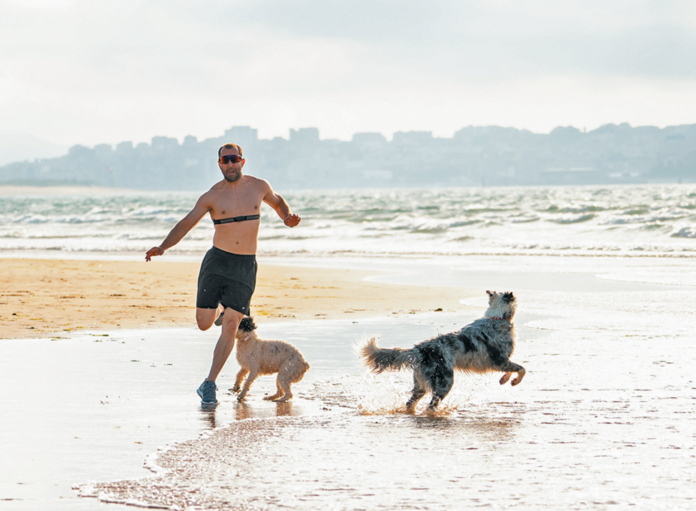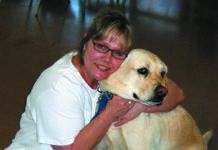You’ve been running with your dog for 3 years, and she has always loved it — couldn’t wait to get out there. But lately, she doesn’t seem to want to go. And when she does, she wants to stop often, ruining your workout session. Why isn’t she enjoying it anymore?
It could be that while you’ve aged 3 years in 3 years, she has aged about 20. Yes, she’s still fit, but being fit is different for a 60-year-old than a 40-year old. In addition, she may not really enjoy a straight run. Remember, she’s not trying to burn calories or build up her aerobic capacity. She just wants to be outdoors with you and having a good time. To her, there could be more value in stopping to sniff a hydrant with an interesting scent than hitting the 2-mile mark. With that in mind, here are some tips to make running with your pet more enjoyable for her, as well as safer, no matter what her age.
Start off slowly
You may have been jogging for years, but for your dog it might be brand new. Think back to the first day you ever ran for some distance. That’s where your pet is when she starts out, not where you are after years of training. If on your first day you tried to run the speed or distance you do now, you would have literally collapsed. Increase the intensity of the run very gradually, perhaps starting with fast walking rather than running.
Forget personal best
Even once your dog becomes acclimated, you should not be trying to run to match or top a certain speed or distance at those times she’s jogging alongside you. The outing is largely for your pet’s benefit. If she wants to stop and smell something, or if she sees another dog or person she wants to greet, let her. Imagine if someone insisted that you not enjoy your exercise routine in the way that worked for you.
Look for signs of fatigue
Even after the two of you establish a regular rhythm, always be on the lookout for any sign of pain, discomfort, or exhaustion. No headphones to distract you, please, because signs can be subtle (your dog will try very hard to please you) and you need to be paying close attention. If for whatever reason your dog’s energy is flagging, slow down or stop completely and wait a few minutes. If she doesn’t seem to want to resume, the jog is over.
Warm up — and cool down
Just like a person, a dog should not go from a heart beating at rest to high-intensity pumping with nothing in between. Every time you go out with your pet, start with a warm-up — 5 minutes of just walking. And finish with a cool-down — five minutes of walking on the back end. That’s better for your own health, too.
Bear in mind that dogs overheat more easily
Dogs do not sweat like we do, so their bodies don’t cool down as efficiently as ours. That increases their risk for dehydration and even heat stroke as the hot weather comes around. For that reason, during the summer months, restrict your runs to the early morning or the evening to keep out of the strongest heat of the day. (Mornings are better because the pavement won’t have heated up yet.) And always have water available. A thirsty dog will very quickly develop a knack for drinking from a bottle.
Locate your inner podiatrist
Inspect your dog’s paws after every single run. Rough pavement can abrade a dog’s paws until they roughen with use. And during cold weather, chemicals, salt, and sand that municipalities use to melt snow can prove irritating. Of course, because your pet is not wearing sneakers, she could also get something caught between her paws, like a small piece of glass. Brush away anything that shouldn’t be there, and as you’re doing so, conduct a quick check for lacerations.
It’s all about your pet’s mood
Some dogs very much enjoy running — on some days but not others. Some dogs love it every single day — for a while, until they get bored with it. All dogs would prefer running on an interesting path rather than around and around the same track or on a crowded boulevard. If you find at any point that your pet is not having a good time jogging or not able to keep up, choose another way to engage her in physical activity. When it’s no longer fun for the dog, it’s the wrong thing for the two of you to be doing together.





